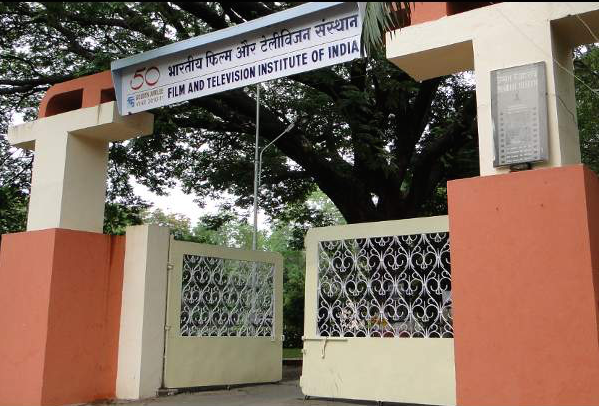Film-School Education in India: Negation and Assimilation
Post by Kiranmayi Indraganti, Srishti Institute of Art, Design and Technology, Bangalore, India
This post continues the ongoing “From Nottingham and Beyond” series, with contributions from faculty and alumni of the University of Nottingham’s Department of Culture, Film and Media. This week’s contributor, Kiranmayi Indraganti, completed her PhD in the department in 2011.
This post proposes, briefly, a work-in-progress framework for understanding filmmaking education in India, its impact on filmmaking sensibilities and its assimilation and negation strategies in positioning itself as a force playing to an implicit global sensibility. Filmmaking education is historically located in “film schools,” where the attempt has been to provide focused inputs in directing, cinematography, and so forth, and more recently, areas encompassing digital media. India now has about ten film schools and fifteen to twenty other institutes/departments offering courses in film and video production.[1] Film graduates, with a degree in a specific specialization from Film and Television Institute of India (FTII), Pune, and other similar institutes, have long made careers in the vibrant, multilingual film industries across India. The boom of satellite television, DVD markets and Internet forums[2] has given rise to growing awareness of filmmaking processes, and a continued interest in filmmaking education. This has facilitated the emergence of private film schools in several cities.
Historically, the formal entry of film-school education in India in the 1960s spurred a rethinking of the prevalent modes of cinematic storytelling. Early film-school students learned about cinema and its history in broader terms than simply in relation to the cinema(s) of Mumbai, Chennai and Kolkata. Students were introduced to national cinemas from Europe and Asia among others, and to film movements and “auteurs” from around the world. This education became a dynamic forum for indie-film thinking and served as the fountainhead of alternative cinema.[3] The locus of this legacy and energy—the FTII, Pune—established itself as the premier film institute not only for the way it influenced the evolution of cinema but also for making possible various positionings of cinema within India. In other words, this education has become a force for students to think not only of how alternative they can get with their practice but also how significant they can be as practitioners within the prevalent filmmaking system. The contribution is vital to the way India’s diversity is articulated and fostered while providing a forum for dissent. This legacy has continued for long, but the notion of film school education in the last couple of decades has changed, with emphasis shifting to techno-centricity and economic, political and cultural gain on campuses. Film education has entered a new world (a much different one from that of the 1960s) that is “media saturated, technologically dependent and globally connected.”[4] In this world, the Internet absorbs cultural forms such as television, popular music, film and advertising, and creates cyber-spaces and emergent forms of culture and pedagogy, where people—young and old, men and women—receive a covertly mediated education in values, behavior and knowledge.[5] In the context of India’s media-saturated world, on one hand, there is greater visibility to the vocalizing of politics of traditional educational spaces, and on the other, the popular cinema throws challenges as a money-grossing machine, as a “significant other” to Hollywood in the global arena, modulated by a satellite-driven aesthetic. So, reviewing the role of film-school education, the relevance of its curriculum and creation of a filmmaking culture to which film graduates can migrate, can be a starting point to deepen the potential of this education and critically engage with creative self-expression and the circulation of dominant values (which will be my larger project).
In India, there is a dichotomy between film teaching and filmmaking. As is wont, curriculum at a film institute is characterized by a primary concern to prepare students to execute “narrativity” for camera: this includes understanding elements of time and space in realizing dramatic units or shots that connect well to present an actuality or a dramatic story. The curriculum is a means to take students closer to an “effective visual medium” and “good cinema” while responding to various levels of (their) self-expression. For film teachers, this requires a balance act: between what one sees/shows and what one teaches. We see films of a certain kind being made in India—making money and traveling or not traveling across India for whatever storytelling conventions they follow. On the other hand, we teach a certain set of principles to be integrated into practice. Curiously, the components we teach—whether a continuity exercise or chase sequence—privilege a realist aesthetic, aligned with a tightly constrained temporal and spatial canvas that stands in opposition to the larger context in which the reception of film narratives happens, with its allusions to epic tales and fables.[6]
Filmmaking teachers in India, like their colleagues elsewhere, rely on what works within the grammar of cinema here rather than the very mode of cinema, which predominantly celebrates pre-modern modes of entertainment, with episodic tales and self-consciously framed, operatic dramas.[7] Put simply, what we teach at film schools and what we see on screen as Indian cinema don’t always align. While this has been evident historically, and has perhaps helped parallel cinema to flourish, the film-school space, in the now-changed world, can afford to outgrow its own limitations and compartmentalizations. Despite the push-pull effect of different filmmaking sensibilities, the film-school graduates are (by default) also active contributors to the expansive positioning of Indian popular cinema on the global scene as directors, technicians and actors, owing to their co-opting strategy to work both on song-and-dance routines and on arthouse cinema.
Consequently, the larger question is: can a case be made about film education in India as something distinct and evolving to accommodate the legacy of dissent and also intervene in the global success story of its cinema? This question makes a variety of investigations possible. For example, a) new storytelling strategies can be linked to learning strategies at film schools; and b) filmmaking can be studied more in relation to shaping sensibilities than in relation to the industry without ignoring the industry practice. In the Internet-driven world, film schools would benefit from becoming forums that can engage critically and actively with ideologies and competencies in order to optimize their value and challenge new stereotypes.
[1] Many Indian metropolises have various institutes offering either “VisCom” (Visual Communication) or a variety of media or communications courses. Film schools per se are fewer in number, with Film and Television Institute of India (FTII), Pune; and Satyajit Ray Film and Television Institute of India (SRFTI), Kolkata; topping the list. There are private schools such as Whistling Woods, Mumbai; L V Prasad Film and TV Academy, Chennai; Ramoji Academy of Film and Television, Hyderabad; besides well-established autonomous institutes such as Jamia Milia Islamia, Delhi; and National Institute of Design (NID), Ahmedabad; catering to aspiring visual storytellers.
[2] The Indian media and entertainment industry (which includes films, television, satellite, music, print, radio, advertising, gaming and animation) is estimated at 1,026 billion rupees. See “#shootingforthestars: FICCI-KPMG Indian Media and Entertainment Industry Report 2015” (https://www.kpmg.com/IN/en/IssuesAndInsights/ArticlesPublications/Documents/FICCI-KPMG_2015.pdf), p. 2.
[3] Noted filmmaker Adoor Gopalakrishnan’s personal journey of joining FTII and spearheading a movement towards a certain cinematic aesthetics is just one of the many examples.
[4] Douglas Kellner and Jeff Share, “Critical Media Literacy, Democracy, and the Reconstruction of Education,” Media Literacy: A Reader, eds. Donaldo Macedo and Shirley R. Steinberg (New York: Peter Lang, 2007), p 3.
[5] Ibid. p. 4.
[6] Philip Lutgendorf, “Is There an Indian Way of Filmmaking?,” International Journal of Hindu Studies 10.3 (December 2006), p. 249.
[7] Ibid. p. 250.





